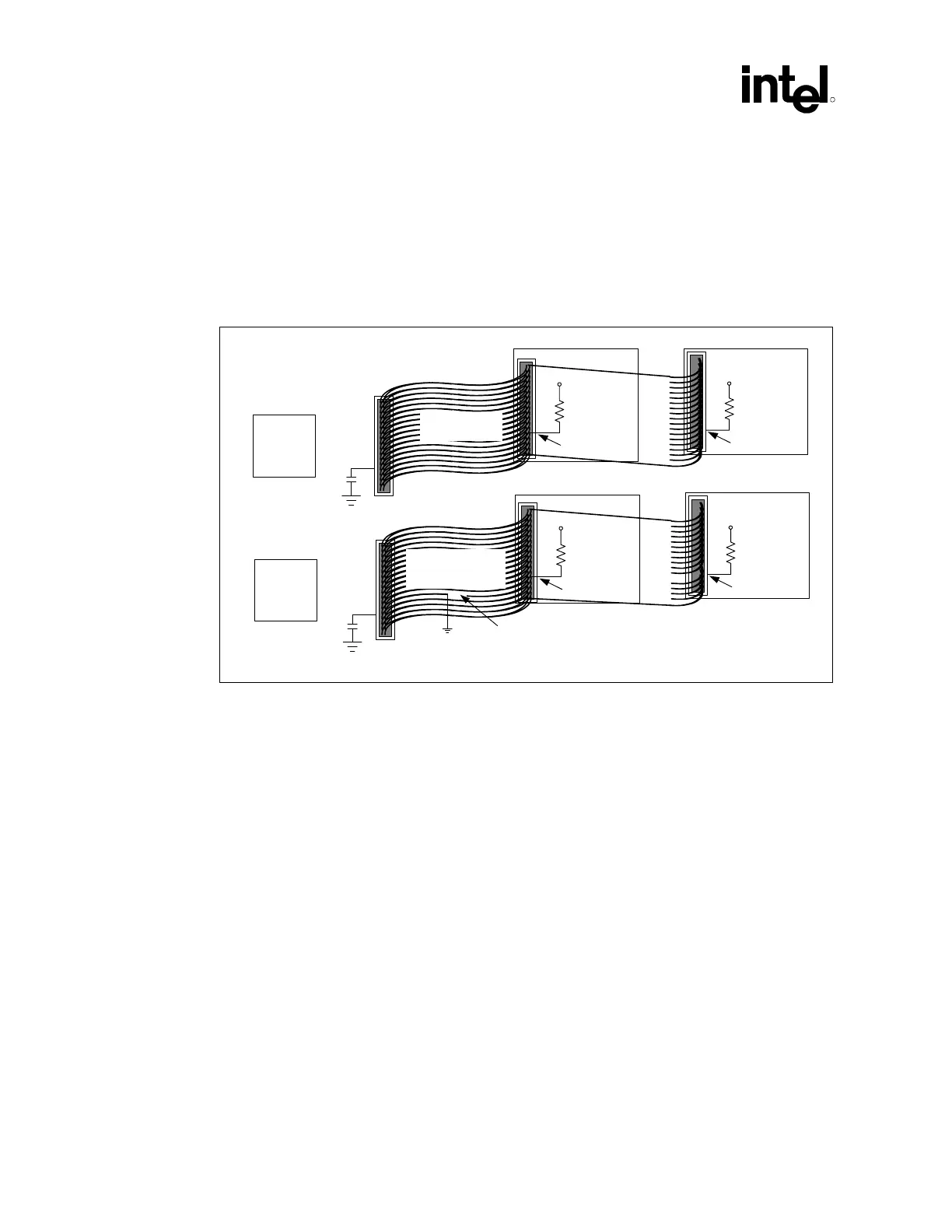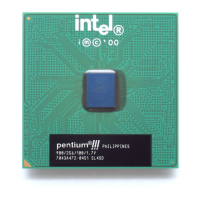I/O Controller Hub 2
R
136 Intel
®
Pentium
®
4 Processor / Intel
®
850 Chipset Family Platform Design Guide
9.1.2.2 Device-Side Cable Detection
For platforms that must implement Device-Side detection only (e.g., NLX platforms), a 0.047 µF
capacitor is required on the motherboard as shown in Figure 88. This capacitor should not be
populated when implementing the recommended combination Host-Side/Device-Side cable
detection mechanism described above.
Figure 88. Device-Side IDE Cable Detection
80-conductor
IDE cable
IDE drive
5 V
ICH2
Open
IDE drive
5 V
40-conductor
cable
IDE drive
5 V
PDIAG#
ICH2
IDE drive
5 V
PDIAG#
PDIAG#PDIAG#
PDIAG#/
CBLID#
PDIAG#/
CBLID#
10 kΩ
10 kΩ
10 kΩ
10 kΩ
IDE_dev_cable_det
0.047 µF
0.047 µF
This mechanism creates a resistor-capacitor (RC) time constant. The ATA mode 3, 4, or 5 drive
will drive PDIAG#/CBLID# low and then release it (pulled up through a 10kΩ resistor). The drive
will sample the signal after releasing it. In an 80-conductor cable, PDIAG#/CBLID# is not
connected through to the host and therefore the capacitor has no effect. In a 40-conductor cable,
the signal is connected to the host. Therefore the signal will rise more slowly, as the capacitor
charges. The drive can detect the difference in rise times and it will report the cable type to the
BIOS when it sends the IDENTIFY_DEVICE packet during system boot as described in the
ATA/66 specification.

